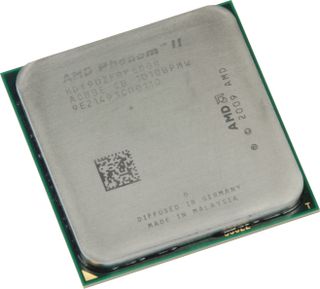Efficiency: Optimizing The Clock Rate Of AMD's Phenom II X6
AMD’s six-core CPU is affordable (at least, compared to Intel's Core i7-980X). We're overclocking the Thuban design to see if its efficiency improves from faster clock rates. Comparisons to other quad- and hexa-core processors provide some perspective.
AMD Phenom II X6
Here’s the Phenom II X6 1090T. I recommend reading Chris Angelini’s review on the Phenom II X6 1090T and the 890FX platform. It provides a comprehensive overview of AMD’s latest processor flagship product. The comparison between AMD’s and Intel’s respective “turbo” implementations is interesting.

So far, there are only two six-core Phenom II models available, but we expect more variants, including (hopefully) quad-core options, to arrive within a few months. Since all processor manufacturers have to find ways of increasing yields and coping with transistor issues, chances are good that many six-core die with defects on one or two cores will be turned into quad-core models and sold (at least to OEMs). This would be welcome, since the Thuban hexa-core design introduces minor performance enhancements to the AMD portfolio. Keep in mind that only the 1090T flagship is a Black Edition part that allows altering of the multiplier to overclock the chip without overclocking motherboard components.
The new AMD flagship is based on the same architectural principles as the Phenom II X4, including 512KB L2 cache per core, 64+64KB instruction and data caches per core, and a shared 6MB L3 cache. Intel was able to capitalize on its 32 nm manufacturing process to increase L3 cache capacity, but at 45 nm, AMD can’t. It's amazing enough that the company was able to adopt a more complex six-core design without shifting to 32 nm. The X6 also sports the same 2 GHz HyperTransport interconnect, AMD’s proven dual-channel DDR3-1066/1333 memory controller, and a 125W power envelope.

The Phenom II X6 runs on all Socket AM3 motherboards, and even on older Socket AM2+ boards with DDR2 memory, so long as the motherboard vendor provides an updated BIOS version. Overclocking should only be done on a high-end motherboard though, since the processor sucks down quite a bit of power when pushed to its limits.

Stay on the Cutting Edge
Join the experts who read Tom's Hardware for the inside track on enthusiast PC tech news — and have for over 25 years. We'll send breaking news and in-depth reviews of CPUs, GPUs, AI, maker hardware and more straight to your inbox.
Current page: AMD Phenom II X6
Prev Page Overclocking AMD’s Six-Pack Next Page Test Platform And The CompetitionMost Popular

